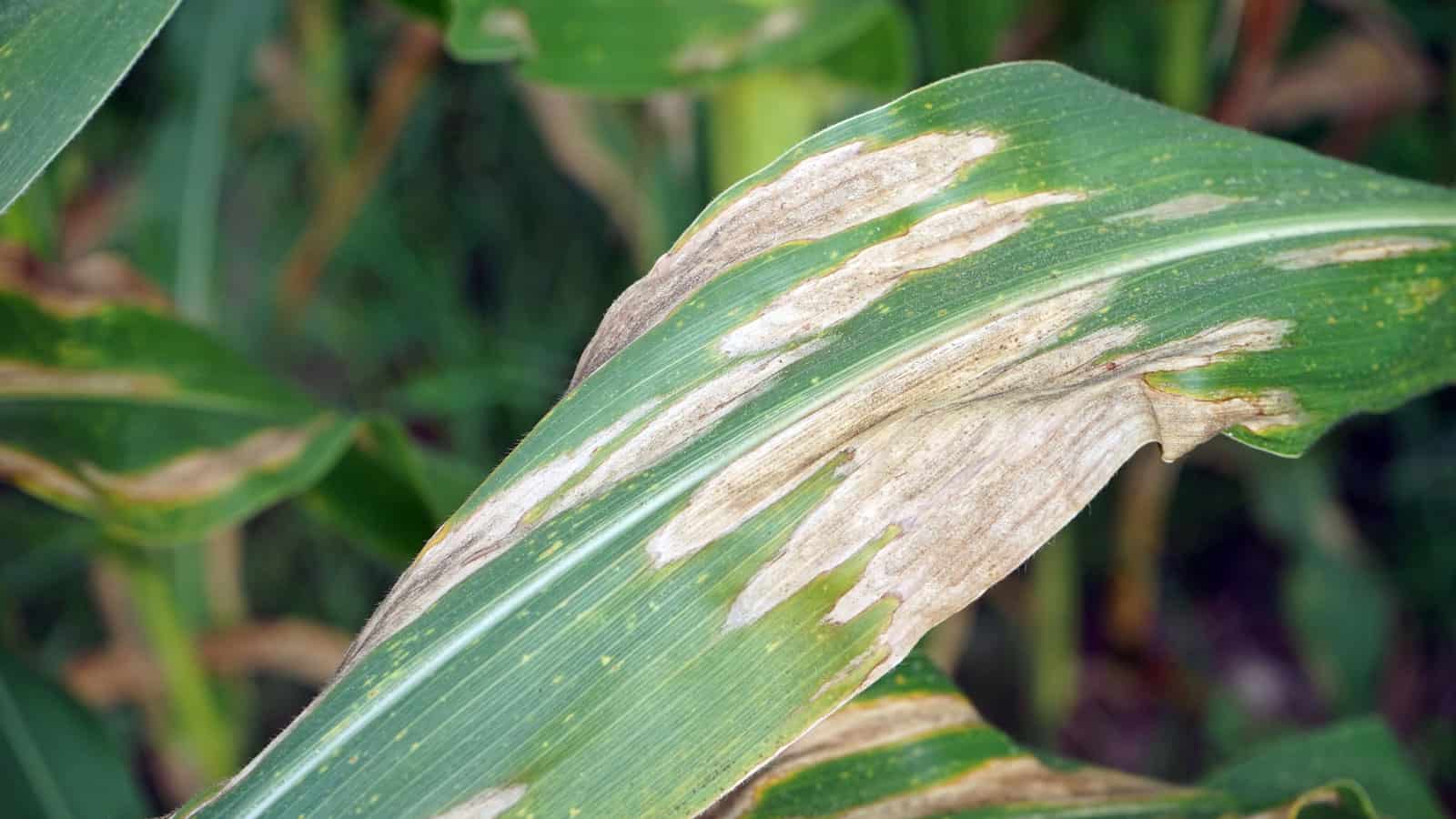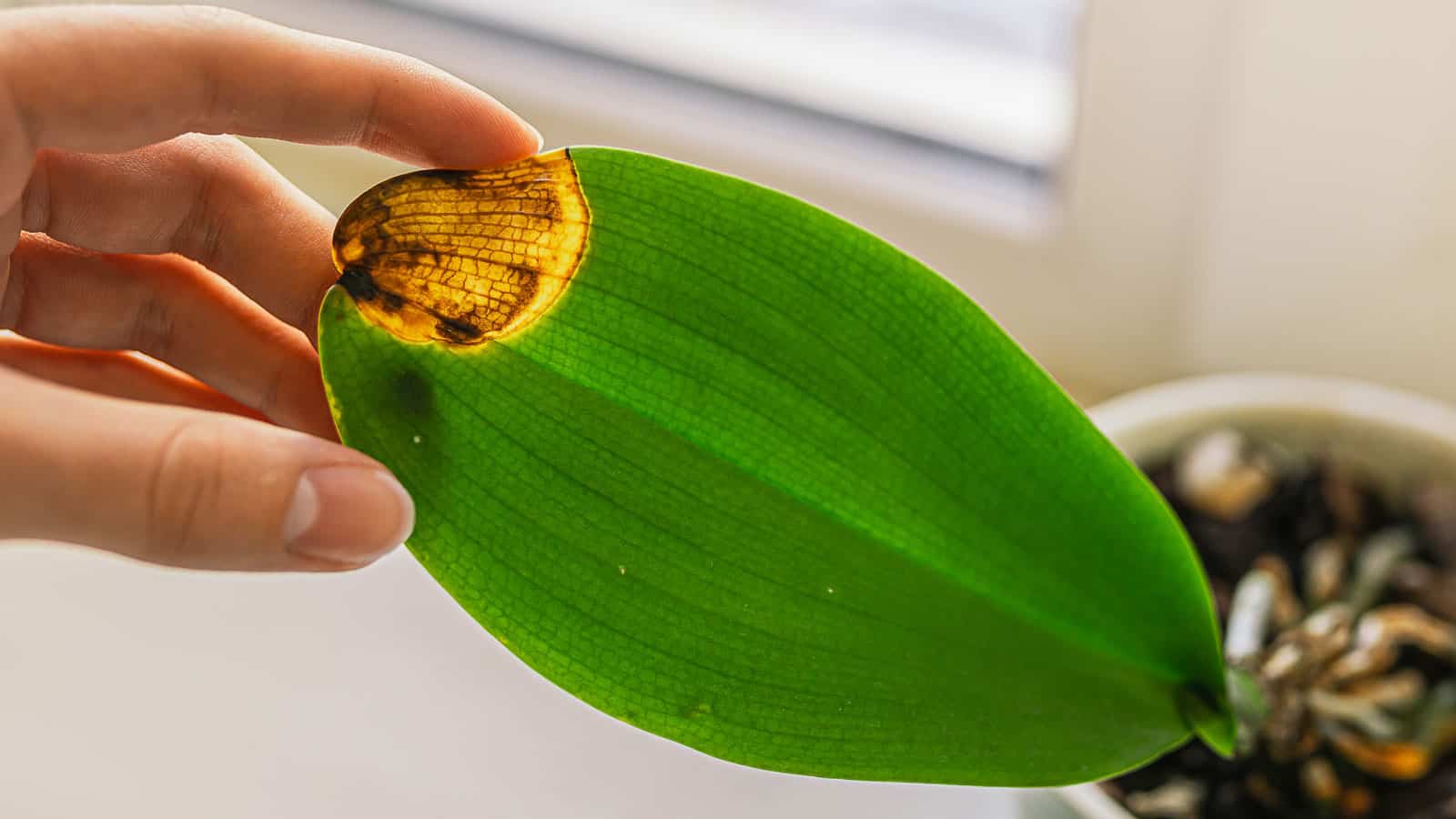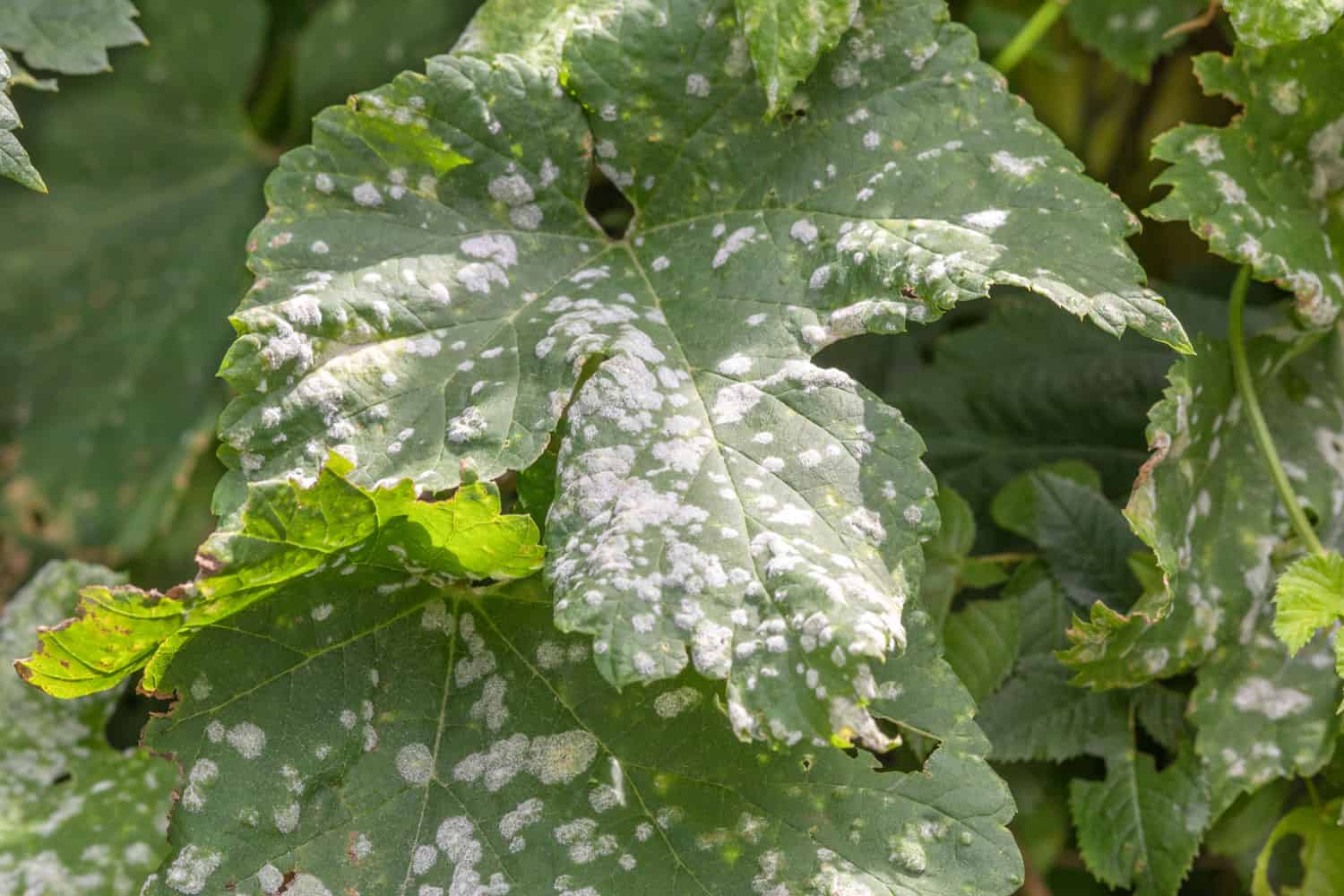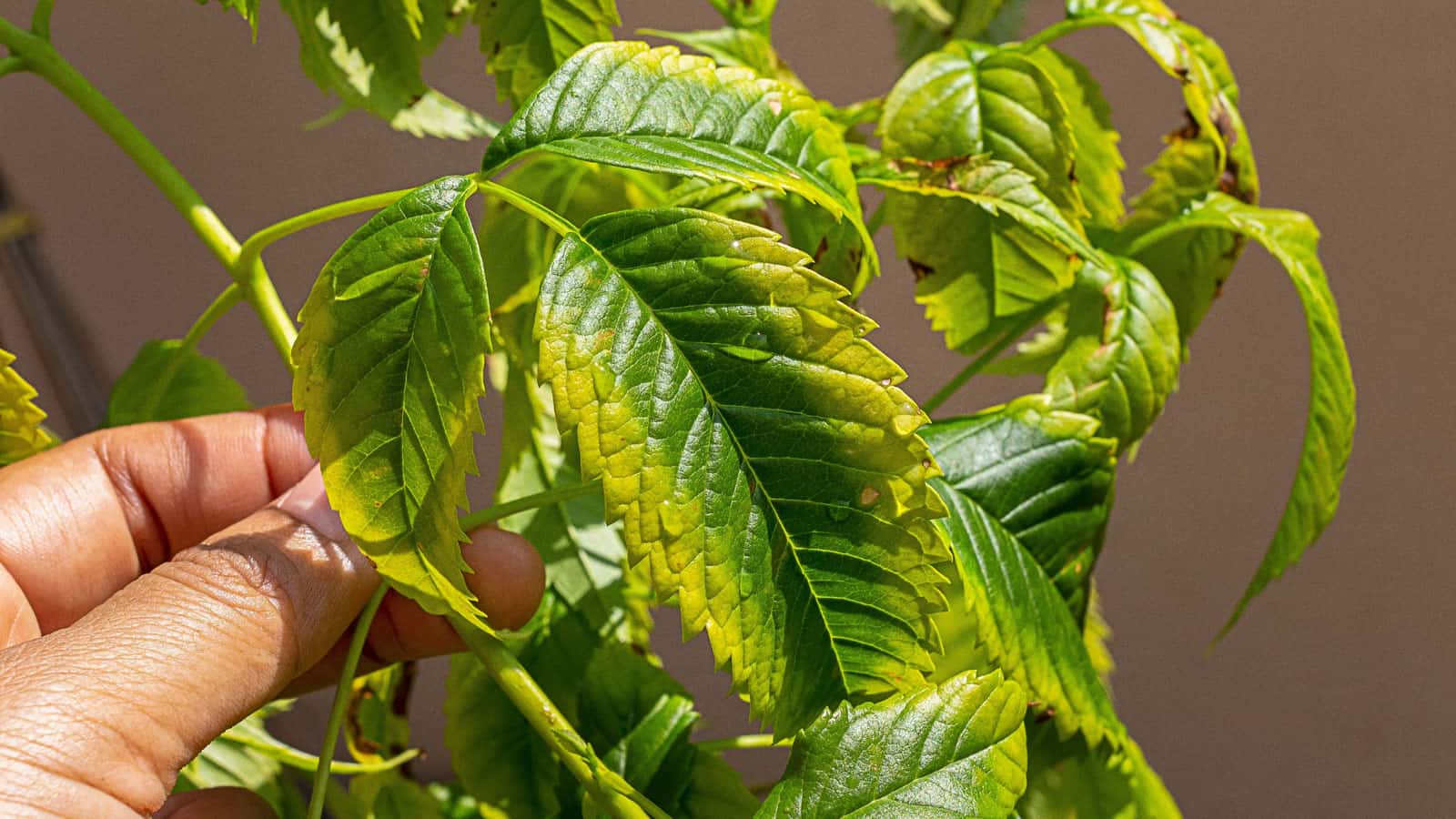Winter can be tough on indoor plants. The season's dry air and low light increase their risk of diseases and many diseases such as:
- Leaf blight
- Bacterial leaf spot
- Powdery mildew
- Tissue death
Stay alert to these common winter challenges for your indoor plants. You can maintain your plants' health by taking quick and effective action. Keep reading to discover more tips and strategies to protect your green friends this winter.
1. Leaf Blight (Anthracnose)
One of the most common indoor plant diseases you must watch out for is Leaf Blight, also known as Anthracnose. It thrives in damp and cool conditions, making it more prevalent in winter.

The symptoms of Anthracnose include yellow to dark brown spots on the leaf tips. These spots can vary in shape and size and may appear water-soaked.
As the disease progresses, the spots may spread and merge, causing the affected leaves to wilt and die.
2. Bacterial Leaf Spot
Bacterial leaf spot disease is caused by bacteria found in soil, water, and even on your hands.
It can spread quickly and cause severe damage to your plants, so it's essential to watch out for the symptoms and take action as soon as possible.

Bacterial leaf spot disease can cause small, water-soaked lesions on the leaves of your plants. These lesions can quickly grow in size and turn brown or black. You may also notice yellowing or wilting of the leaves.
The leaves may fall off entirely in severe cases, leaving your plant vulnerable to other diseases.
3. Powdery Mildew
Powdery mildew is a fungal disease easily recognizable by a white or gray powdery coating that appears primarily on the leaves and stems.

Infected leaves may exhibit yellowing, browning, or distortion, often starting at the edges and progressing inward. You might also notice the leaves curling or wilting, a perplexing sign, especially if your watering routine is consistent.
Stunted growth is another hallmark of powdery mildew; affected plants may display smaller new leaves or cease growing new foliage.
4. Tissue Death
Winter presents a unique challenge for indoor plants, often leading to tissue death, or necrosis, in leaves, stems, and roots.

Common causes include dry air and low humidity, prevalent in heated homes, causing leaves to dry and brown at the edges.
Sudden cold drafts and temperature fluctuations can also damage plant cells, resulting in necrotic spots.
Overwatering during these colder months is another culprit, leading to root rot and subsequent stem and leaf necrosis.
Pests, such as spider mites and aphids, exacerbate the issue by causing physical damage to plant tissues.
Treatment Tips
Maintaining the health of your indoor plants during the colder months requires a proactive approach. In this section, we provide essential treatment tips to help combat common plant diseases.
Prune and Clean
Regularly check your plants for signs of disease. Pruning away infected or dead foliage is crucial in preventing the spread of pathogens. Dispose of removed plant parts properly to maintain a healthy environment.
Adjust Watering Routine
Overwatering can lead to several plant diseases, especially in winter. Water your plants less frequently, allowing the soil to dry out slightly between waterings.
This practice helps prevent root rot and other moisture-related issues.
Improve Air Circulation and Humidity
Good air circulation is essential for plant health. Use a fan or occasionally open a window to keep air moving. Use humidifiers or water trays near your plants to combat dry indoor air, particularly in heated rooms.
Use Fungicides and Bactericides
Apply appropriate fungicides or bactericides when necessary, following the manufacturer's instructions. Ensure the products are suitable for indoor plants and specific to the disease you're treating.
Monitor Temperature and Light
Protect your plants from cold drafts and extreme temperature changes. Ensure they receive adequate light, utilizing natural sources or grow lights, as low light can weaken plants and increase susceptibility to disease.
Pest Control
Pests can exacerbate or spread diseases. Regularly inspect for pests and treat infestations with appropriate insecticides or natural remedies, keeping your plants healthy and robust.
Are you searching for the perfect solution to protect your indoor plants? Look no further! Check our article: What's The Best Neem Oil For Indoor Plants?
Top Plant Disease Identification Apps
Navigating the challenges of plant care can be daunting. But fear not; technology comes to the rescue with various apps designed to identify and treat plant diseases. Let's explore some game-changers:
- Planta: Perfect for houseplant enthusiasts, offering tailored care instructions.
- Agrio: A must-have for agronomists, with disease identification features and climate alerts.
- Plantix & Plant Disease Identification: These apps use AI to diagnose diseases from photos, ideal for gardeners and farmers.
Incorporating these apps into your plant care routine can transform your approach, making your winter garden care effective and engaging.
As the cooler months approach, ensuring your indoor plants are well-prepared for the transition is crucial. Don't miss our comprehensive article: 8 Ways To Get Indoor Plants Ready To Come Back Inside.
